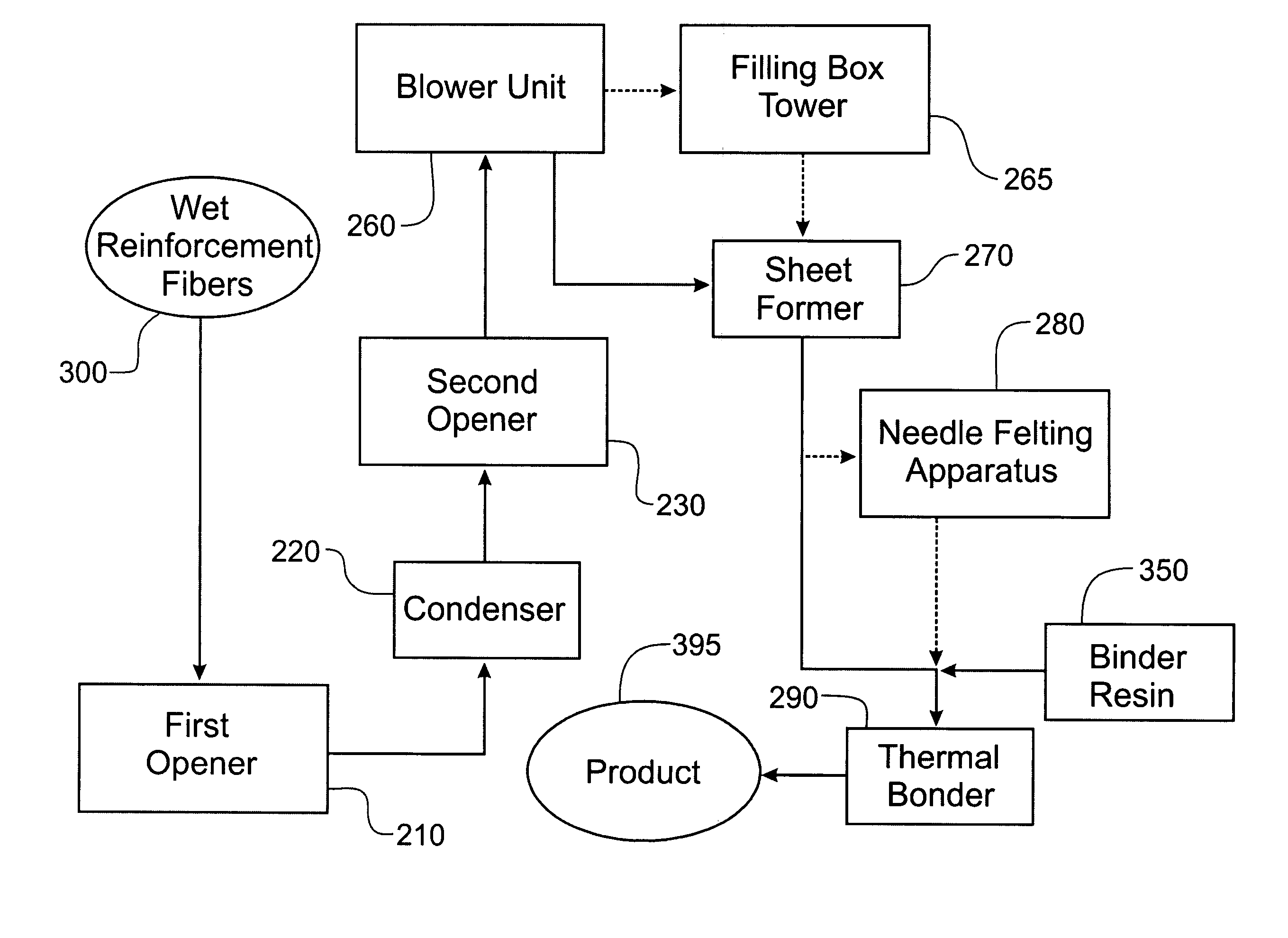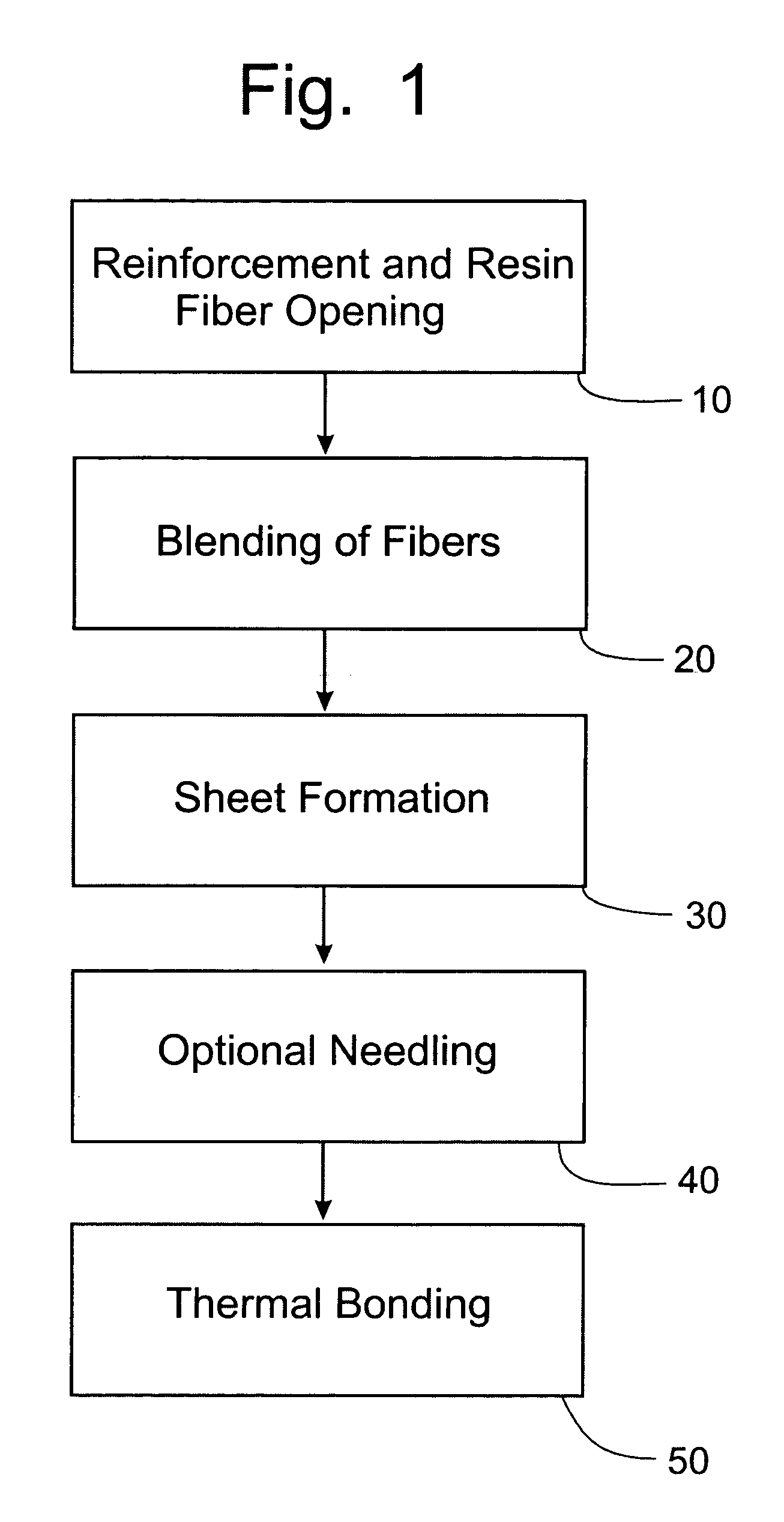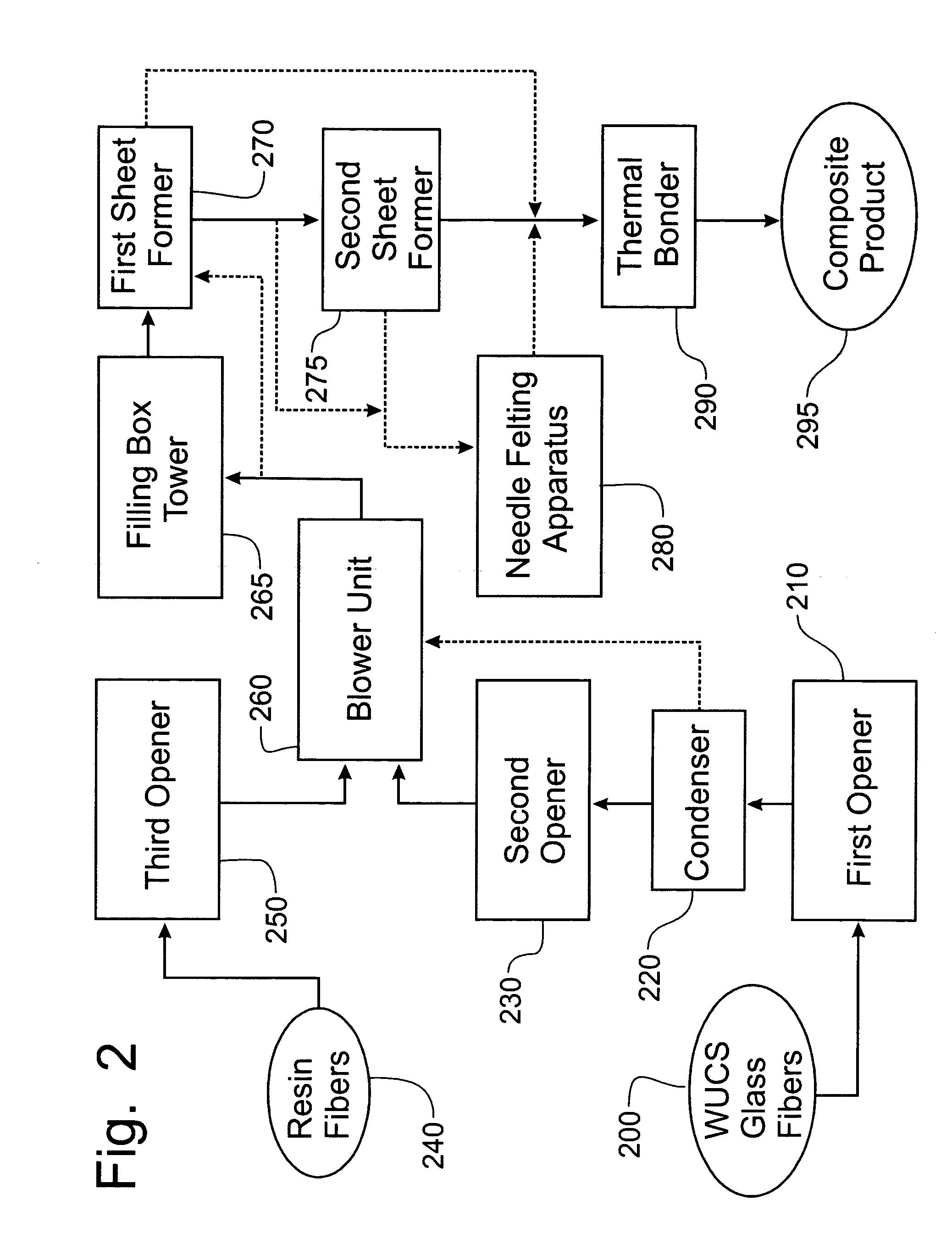Development of thermoplastic composites using wet use chopped strand (WUCS)
a technology of thermoplastic composites and wet use, which is applied in the direction of auxillary shaping apparatus, wood working apparatus, butter production, etc., can solve the problems of affecting the quality of thermoplastic composites, the weight distribution of mats that cannot be uniform across the surface area, and the cost of processing the use of dry-chopped input fibers
- Summary
- Abstract
- Description
- Claims
- Application Information
AI Technical Summary
Benefits of technology
Problems solved by technology
Method used
Image
Examples
example
[0044]A composite product was produced according to an exemplary embodiment of the present invention. In particular, wet use chopped strand glass fibers were dried and individualized by sequentially passing the WUCS fibers through a first bale opener, a condenser, and a second bale opener. Polypropylene fibers were opened by a third bale opener, and the opened polypropylene fibers were added to the WUCS glass fibers and transferred to a sheet former. Next, the sheet was passed through a thermal bonding oven which had a temperature of from 140° C. to 200° C. to form a composite product. The formed composite contained approximately 55% WUCS glass fibers and 45% polypropylene fibers. In addition, a composite product was formed by a conventional wet laid process using wet use chopped strand glass fibers and polypropylene fibers. As in the composite formed by the inventive process, the composite product formed by the conventional method contained approximately 55% WUCS glass fibers and 4...
PUM
| Property | Measurement | Unit |
|---|---|---|
| melting point | aaaaa | aaaaa |
| melting point | aaaaa | aaaaa |
| length | aaaaa | aaaaa |
Abstract
Description
Claims
Application Information
 Login to View More
Login to View More - R&D
- Intellectual Property
- Life Sciences
- Materials
- Tech Scout
- Unparalleled Data Quality
- Higher Quality Content
- 60% Fewer Hallucinations
Browse by: Latest US Patents, China's latest patents, Technical Efficacy Thesaurus, Application Domain, Technology Topic, Popular Technical Reports.
© 2025 PatSnap. All rights reserved.Legal|Privacy policy|Modern Slavery Act Transparency Statement|Sitemap|About US| Contact US: help@patsnap.com



